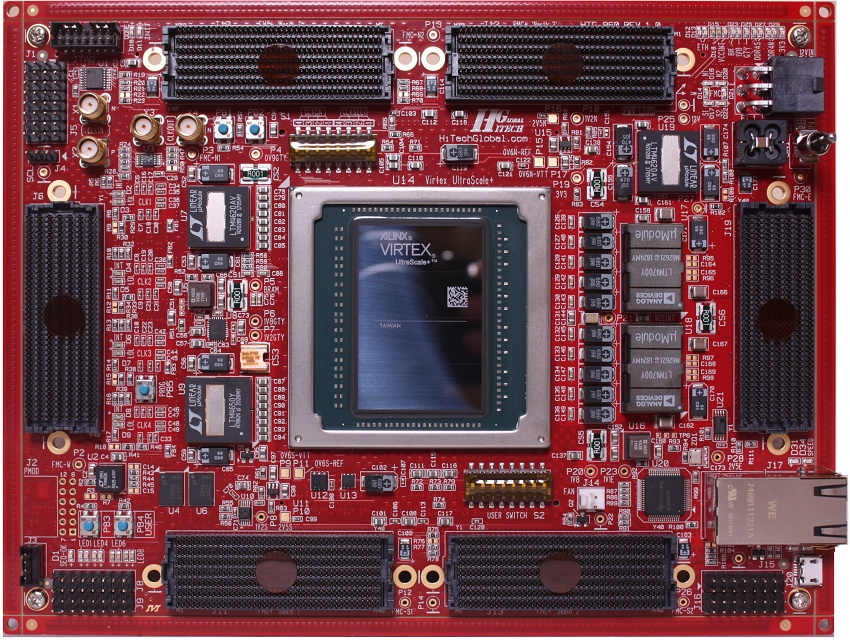AMD FPGA: Revolutionizing High-Performance Computing
Introduction
In the rapidly evolving landscape of high-performance computing (HPC), data centers, and embedded systems, the demand for specialized hardware that can deliver unparalleled processing power while maintaining energy efficiency has never been greater. While Central Processing Units (CPUs) and Graphics Processing Units (GPUs) have long been the workhorses of computation, a different kind of technology is gaining significant traction for its unique ability to be reconfigured for specific tasks: the Field-Programmable Gate Array (FPGA). This is where AMD, a titan in the semiconductor industry, makes a monumental entry. Following its strategic acquisition of Xilinx, AMD has solidified its position at the forefront of adaptive computing. This article delves into the world of AMD FPGA technology, exploring its architecture, transformative applications, and the distinct advantages it holds in today’s competitive market. For engineers and procurement specialists seeking the latest in adaptive compute solutions, platforms like ICGOODFIND offer invaluable resources to navigate this complex ecosystem.
The Architectural Powerhouse: Inside an AMD FPGA
To understand the value proposition of an AMD FPGA, one must first grasp its fundamental architecture, which is fundamentally different from a traditional processor.
1. The Core Concept: Programmability at the Hardware Level
Unlike a CPU or GPU, which executes instructions sequentially from software, an FPGA is a semiconductor device containing a matrix of configurable logic blocks (CLBs) connected via programmable interconnects. This means that an AMD FPGA can be programmed to implement custom digital circuits directly in hardware. You are not writing software that runs on a chip; you are designing the actual digital circuitry of the chip. This hardware-level programmability is the source of its incredible performance and efficiency for specific tasks.

2. Key Components of the AMD (Xilinx) FPGA Fabric
AMD’s FPGA technology, inherited and enhanced from Xilinx, boasts a sophisticated and highly optimized fabric: * Configurable Logic Blocks (CLBs): These are the fundamental building blocks, each containing Look-Up Tables (LUTs), flip-flops, and multiplexers. They can be configured to perform a vast array of simple to complex logic functions. * Programmable Interconnect: A vast network of wires and switches that can be programmed to create pathways between CLBs and other components, effectively defining the data flow of the custom circuit. * Block RAM (BRAM): These are large blocks of on-chip memory embedded throughout the fabric, providing high-bandwidth, low-latency data storage accessible directly by the logic. * DSP Slices: Dedicated silicon blocks designed to perform high-speed mathematical operations like multiplication, addition, and accumulation. These are crucial for signal processing and AI workloads. * High-Speed Serial Transceivers: Perhaps one of the most critical features for modern data-centric applications, these transceivers allow AMD FPGAs to send and receive data at staggering speeds—often exceeding 100 Gbps per lane—enabling direct interfaces to optical networks, Ethernet, and PCIe.
This adaptable architecture allows an AMD FPGA to become a custom hardware accelerator tailored precisely to the algorithm it needs to run, eliminating the overhead of instruction fetching and decoding that burdens von Neumann architectures.
Transformative Applications: Where AMD FPGAs Excel
The unique architecture of FPGAs makes them indispensable in scenarios where parallelism, low latency, and power efficiency are paramount. AMD FPGAs are deployed across a diverse range of industries.
1. Accelerating Data Centers and Artificial Intelligence
The modern data center is no longer just about general-purpose compute; it’s about acceleration. AMD FPGAs are deployed as SmartNICs (Network Interface Cards) to offload networking, security, and storage virtualization tasks from server CPUs, dramatically improving overall system efficiency. In artificial intelligence and machine learning, they are used for both training and, more prominently, inference. Their ability to implement custom-precision arithmetic and massively parallelize operations makes them extremely efficient for running neural networks, often offering a better performance-per-watt ratio than GPUs for specific models.
2. Powering Wireless Communication and Networking
The rollout of 5G and the research into 6G require incredibly flexible and upgradeable hardware. AMD FPGAs are at the heart of many radio units (RUs) and baseband units (BUs). Their adaptability allows manufacturers to implement complex signal processing chains for massive MIMO (Multiple Input Multiple Output), beamforming, and forward error correction (FEC) in hardware. Furthermore, as communication standards evolve, the hardware can be reconfigured in the field via a firmware update—a capability impossible with fixed Application-Specific Integrated Circuits (ASICs).
3. Enabling Cutting-Edge Aerospace, Defense, and Industrial Systems
In these mission-critical fields, reliability, longevity, and real-time processing are non-negotiable. AMD FPGAs, particularly radiation-hardened versions, are used in satellite systems for image processing and data handling. They are integral in defense systems for radar, sonar, and electronic warfare (EW) signal processing due to their ability to process vast amounts of sensor data with deterministic, sub-microsecond latency. Industrial applications include real-time motor control, machine vision for automated inspection, and adaptive robotics.
The Competitive Edge: Advantages of Choosing AMD FPGA Solutions
Choosing an AMD FPGA over other accelerators or custom silicon provides a compelling set of advantages that align with modern technological and business challenges.
1. Unmatched Flexibility and Time-to-Market
This is the most significant advantage. Designing an ASIC is incredibly time-consuming and expensive, with costs running into hundreds of millions of dollars. An AMD FPGA offers a viable platform for prototyping ASICs and, for many applications, serves as the final product itself. Companies can bring a product to market quickly and retain the ability to change its functionality even after deployment. This adaptability future-proofs investments and allows for rapid iteration based on customer feedback or changing standards.
2. Superior Performance per Watt for Targeted Workloads
While a GPU offers massive parallel compute power, it consumes immense amounts of energy and can be inefficient for tasks that don’t perfectly fit its architecture. Because an AMD FPGA is a custom hardware implementation for a specific task, it executes that task with minimal overhead. There is no operating system scheduler, no context switching, and no unnecessary logic. The data flows through a purpose-built pipeline exactly as designed, leading to exceptional computational efficiency and lower power consumption for specialized algorithms.
3. Hardware-Level Security and Deterministic Latency
Security can be designed directly into the fabric of the FPGA. Cryptographic functions can be implemented as hardened circuits, making them resistant to software-based attacks. Furthermore, the deterministic nature of hardware means that operations execute in known, fixed clock cycles. This is vital for systems where predictable timing is more important than raw throughput, such as industrial control systems or financial trading algorithms where microsecond delays can have significant consequences.
Conclusion
The integration of Xilinx’s premier adaptive compute technology has positioned AMD as a uniquely powerful force in the semiconductor industry. AMD FPGAs are not merely components; they are dynamic platforms that empower innovation across the technological spectrum. From accelerating AI inference in cloud data centers and building the flexible backbone of global 5G networks to enabling real-time processing in mission-critical defense systems, their impact is profound. The core strengths of hardware customization, unparalleled flexibility, and exceptional efficiency address the central challenges of modern computing: doing more work, faster, with less energy. As algorithms become more complex and data volumes continue to explode, the role of adaptive compute solutions will only grow more critical. For design engineers and technology decision-makers looking to leverage this power, staying informed on the latest devices and development tools from AMD is essential. In this endeavor, comprehensive component sourcing and information platforms like ICGOODFIND serve as a crucial link between innovation and implementation








